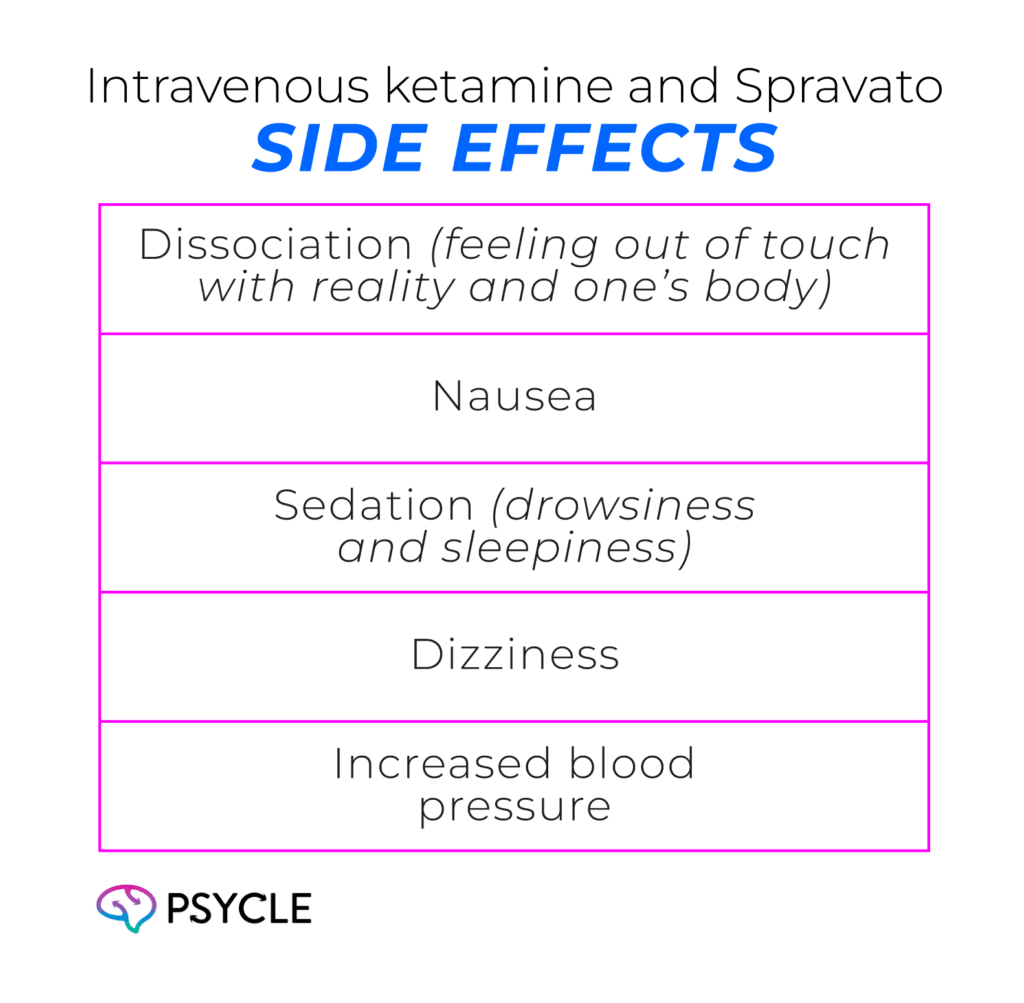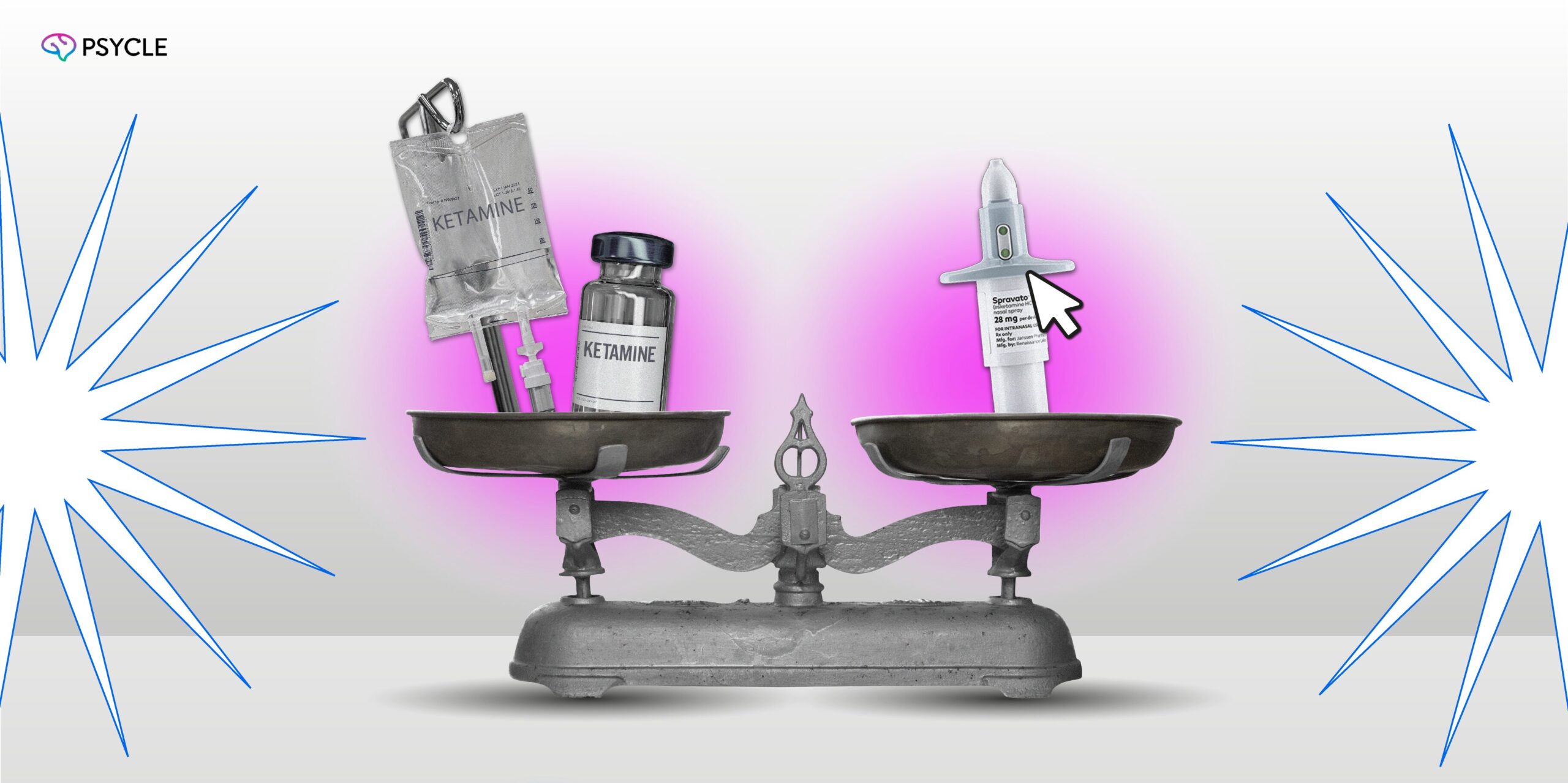This article explores the differences between intravenous and intranasal ketamine, two delivery methods that offer rapid antidepressant effects, while examining their efficacy, safety, and accessibility for patients seeking relief from their symptoms.
Key Takeaways
- Both intravenous ketamine and intranasal esketamine provide quick antidepressant effects, making them suitable for individuals with treatment-resistant depression.
- Research suggests that intravenous ketamine may be more effective overall, with patients often experiencing faster symptom relief and higher remission rates.
- Both administration methods share similar side effects, but intravenous ketamine is associated with a higher incidence of certain adverse effects, such as dissociation and hypertension.
- Intranasal esketamine is FDA-approved and often covered by insurance, while intravenous ketamine is typically administered off-label and usually requires out-of-pocket payment.
Background on Ketamine and Depression
Originally developed as an anesthetic, ketamine has garnered attention in recent years for its strong antidepressant properties. In 2000, researchers conducted the first randomized controlled trial highlighting ketamine has rapid-acting and sustained antidepressant effects.
Since that initial study, numerous trials have confirmed ketamine’s efficacy in depression, particularly for those who haven’t responded to other treatments. There is now a vast number of clinics providing ketamine therapy for individuals with depression and other mental health disorders, including anxiety, addiction, post-traumatic stress disorder (PTSD), and beyond.
Ketamine has a unique mechanism of action compared to other conventional antidepressants. It inhibits proteins called NMDA receptors, which causes an increase in neuroplasticity, the brain’s ability to reorganize itself. Ketamine also increases activity in the prefrontal cortex, a brain region associated with emotional regulation.
Ketamine Infusion for Depression
A typical course of ketamine infusion therapy for depression usually consists of six infusions over two to three weeks. Each session lasts about 40 minutes, during which a low dose of ketamine is administered intravenously in a controlled medical setting.
The effects of ketamine often begin within hours of the first session, and many patients report mood improvements after just a few infusions. However, to sustain the antidepressant effects over time, maintenance doses usually are required. These are typically spaced out over several weeks to months, depending on an individual’s unique response to the treatment.
Nasal Spray Formulations of Ketamine
In the early 2010s, Janssen Pharmaceuticals, a division of Johnson & Johnson, developed Spravato (esketamine), an intranasal spray formulation of ketamine that consists of one of its two chemical components.
Because Spravato is more potent than generic ketamine at blocking NMDA receptors, it can be administered at lower doses, which may help reduce the likelihood of side effects. The FDA approved Spravato as a treatment for certain types of depression in 2019, and over 60,000 psychiatric patients in the US have received Spravato.
Ketamine can also be administered intranasally in its generic mixture form. However, this version of ketamine hasn’t been approved. Instead, this ketamine is used ‘off-label,’ similar to ketamine infusions, meaning when clinicians use a drug for purposes other than its intended use.
Intranasal ketamine may be administered by a clinician or the patient. During Spravato treatment, clinicians closely supervise patients and monitor them for two hours after use. During the initial phase of Spravato treatment, patients have two weekly doses for four weeks and maintenance doses thereafter.
Some ketamine telehealth services may deliver intranasal generic ketamine for at-home use, but Spravato can only be taken in a clinical setting.
Comparative Efficacy of Racemic Ketamine and Esketamine
Recent research has compared the effectiveness of intravenous ketamine and Spravato in treating treatment-resistant depression (TRD).
In one observational study, there were no significant differences between how many patients went into remission or between the overall reduction in depression scores at the end of treatment. However, patients who had IV ketamine tended to respond faster, requiring fewer doses to have a notable treatment effect.
In a meta-analysis, researchers analyzed data from ketamine infusion and Spravato clinical trials and found intravenous ketamine had overall better efficacy. Patients receiving ketamine experienced greater symptom improvement, had higher rates of remission, and fewer patients dropped out of the treatment compared to those receiving Spravato.
The study authors noted, however, that the clinical trial settings may not represent actual treatment outcomes.
Safety and Tolerability Concerns
Intravenous ketamine and Spravato share similar side effects, which are generally mild and only last for a couple of hours. These include:

Both drugs carry a significant risk of substance abuse, but this risk is more closely linked to ketamine than esketamine. This is likely due to ketamine’s wider availability and presence in drug markets.
Both drugs also increase the risk of respiratory depression because of their sedating properties, which is more likely with ketamine as it generally has a stronger sedative effect.
In an analysis comparing intravenous ketamine to intranasal esketamine, researchers found that intravenous administration was associated with a higher overall rate of side effects. Dissociative symptoms were reported in 58% of patients receiving IV ketamine, compared to 34% in the intranasal group.
Hypertension occurred in 45% of IV ketamine patients, compared to 9% in the intranasal group, and dizziness was reported in 30% of the IV group compared to 6% in the intranasal group.
Ketamine Infusion vs Nasal Spray
If you’re considering ketamine treatment but are uncertain about intravenous or intranasal ketamine, there are some key factors to think about beyond just safety and efficacy.
Whereas Spravato has been FDA-approved for depression treatment, intravenous ketamine is given “off-license.” This means it can only be administered by specially certified clinics, which must follow strict guidelines and protocols.
This approval also means Spravato is accepted by most major insurance companies, whereas intravenous ketamine is generally paid for out-of-pocket. Some ketamine infusion clinics, such as Emerge Ketamine in Woburn, Massachusetts, work with insurance companies, but overall coverage options are limited.
Patient preference also plays a big role in deciding between intravenous or intranasal ketamine. Intravenous ketamine may be best for those wanting faster and potentially stronger antidepressant effects. On the other hand, Spravato may be best suited for those scared of needles or in need of financial support.
Alternative Delivery Routes
While intravenous and intranasal are the most well-known ways to administer ketamine, there are several alternative methods that are gaining attention for their potential benefits. Here’s a look at some of these options:
- Oral Ketamine: One alternative is taking ketamine in pill form. This method is convenient because patients can take it at home. However, oral ketamine may be less effective than intravenous or intranasal forms, as it doesn’t get absorbed into the bloodstream as quickly.
- Sublingual Administration: This method involves placing ketamine under the tongue, where it dissolves and is absorbed directly into the bloodstream. Sublingual delivery can provide faster effects than traditional oral pills and may reduce some gastrointestinal side effects.
- Transdermal Patches: Researchers are exploring the use of transdermal patches that allow ketamine to be absorbed through the skin. This method could provide a steady release of the medication, making it a non-invasive option, although it’s not widely available yet.
Conclusion
Ketamine has emerged as a promising option for treating depression, particularly for those who have not found success with traditional antidepressants. With both intravenous and intranasal formulations available, patients can benefit from the rapid relief ketamine offers, although each method has its unique advantages and considerations.
Intravenous ketamine may provide faster effects and higher efficacy, while intranasal esketamine is FDA-approved and often more accessible with insurance coverage.
When deciding between these options, it’s crucial to consider factors like comfort level with needles, potential side effects, and financial implications. Discussing your preferences and concerns with a healthcare provider can help you navigate these choices and find the most suitable treatment plan tailored to your needs.
FAQs
Can Ketamine Treatments Be Covered by Insurance?
Intranasal esketamine is generally covered by major insurance plans due to its FDA approval, while intravenous ketamine is often not covered, requiring patients to pay out-of-pocket, though some clinics may offer insurance options.
What are the Common Side Effects of Ketamine Treatments?
Both intravenous and intranasal ketamine can cause side effects like dizziness, nausea, dissociation, sedation, and increased blood pressure, typically lasting a few hours.
How Long Does it Take to See Results From Ketamine Treatments?
Patients may begin to notice improvements in their symptoms within hours of their first ketamine infusion or nasal spray treatment, although individual responses can vary.
Sources
- https://pubmed.ncbi.nlm.nih.gov/35048815/
- https://pubmed.ncbi.nlm.nih.gov/36724113/
- https://pubmed.ncbi.nlm.nih.gov/35416105/

